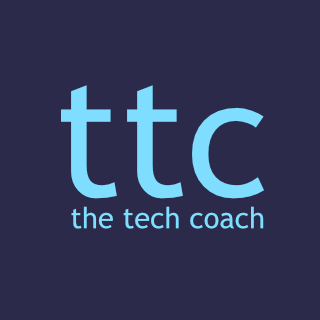Blog
News & Upates
Purple Cow – Seth Godin
The Purple Cow and the Wild Geese: Lessons in Creating Remarkable Products. A note to readers is that this was published in 2005. I find most of the book relevant today. You need to have a remarkable product in a remarkable market. Today's potential consumers are too...
Cache and Carry – My Week In International Education – Entry 11 – The Sun is Setting on Inertia
Ed Tech I’m Using This week a bunch of people posted some SAMR posters that have been online for a while. Having some free time on my hands as it is the summer vacation, and feeling the need to do something other than procrastinate, I give the SAMR model a little...
So Good They Can’t Ignore You – Cal Newport
Four rules to finding a meaningful and engaging work-life. Move from the right work to working right - the big idea of the book. Rule 1 Newport challenges the so-called passion hypothesis which is the key to occupational happiness first figure out what you're...
Cache and Carry – My Week In International Education – Entry 10 – Motivation
Ed Tech I’m Using Busy shapes - I was checking out for my brother's kid, who is 3 years old. The point of the app is to teach about shapes. You click and drag on different shapes and then drop them on top of the same shaped hole. If you get it right, it says the name...
My Educational Philosophy
I believe that learning is a lifelong journey and that our learners, educators, classrooms and learning material are constantly present all around us, in many different shapes and forms. Everyone is an expert in something and when we take a moment to listen, we open...
The Instructional Coach Course: A Marathon of Learning (But Without the Sweat)
I have just past the halfway point on the Instructional Coach Course with Jim Knight and Brian Sepe. I am learning a truckload of strategies and techniques I did not know existed. My current plan is to create some checklists and infographics to accompany them. In the...
Moonwalking with Einstein – Joshua Foer
Remembering items in a list: the first thing that really resonated with me was that it is hard to remember a series of words, and that are not linked together. Foer says that one word is inextricably linked to the next word. So for example he wants to remember: bear...
Cache and Carry – My Week In International Education – Entry 9 – Be Different
Ed Tech I'm Using Looking for a way to promote positive mental health and well-being in your classroom? Look no further than along.org. With a focus on social-emotional learning and building strong relationships, this evidence-based program provides the tools and...
Cache and Carry – My Week In International Education – Entry 8 – Be Different
Ed Tech I'm Using In Experiments with Google, Haiku poems can be enhanced with the assistance of AI-generated music, fonts, and video. This is especially beneficial for my EAL students and creates a more emotional impact. AI I'm Exploring The announcement from Google...
Cache and Carry – My Week In International Education – Entry 7 – Who Will Inherit The Earth?
Ed Tech I'm Using Google Fonts - not exactly groundbreaking, but I recently rediscovered Google Fonts, after using dafont for what seems like forever. Google Fonts is now my go-to for all of my font needs! AI I'm Exploring Teachable Machine is a free online tool...
Cache and Carry – My Week In International Education – Entry 6 – Where Is The Toe Connected To?
Get ready for your weekly serving of what's been happening in my head and life! Ed-Tech I’m Using I used Mentimeter for the first time whilst delivering a workshop at ISPP in Phnom Penh, Cambodia. I first came across this on a bright morning podcast. The host, Elena...
Cache and Carry – My Week In International Education – Entry 5 -Class of 20.
Get ready for your weekly serving of what's been happening in my head and life! Ed-Tech I’m Testing This week one of my students introduced me to CapCut an online video editor to match the power of iMovie! It is free to use, available on both Android and iOS, as well...
Cache and Carry – My Week In International Education – Entry 4
Get ready for your weekly serving of what's been happening in my head and life! Ed-Tech I’m Testing It's that time of year when I'm teaching a bunch of digital citizenship lessons including the importance of checking and triangulating information online. Below you'll...
Cache and Carry – My Week In International Education – Entry 3
Ed-Tech I’m Testing This week my co-teacher and I were teaching plotting points, and writing coordinates on a 4 quadrant graph. I found the following a lot of fun and a way for the students to approach the topic in a fun way. Topmarks has a bunch of links to different...
The Why Axis: Motivation, Purpose and Authentic Self-Interest
Look for the hidden variable when analyzing data - particularly for causal relationships. Discrimination can take many forms, from race and religion to the schools and places you work at. Most modern-day discrimination is caused by people/companies looking to increase...
